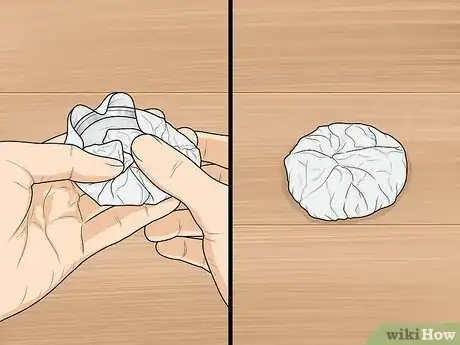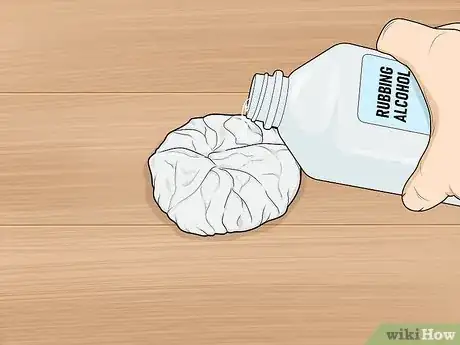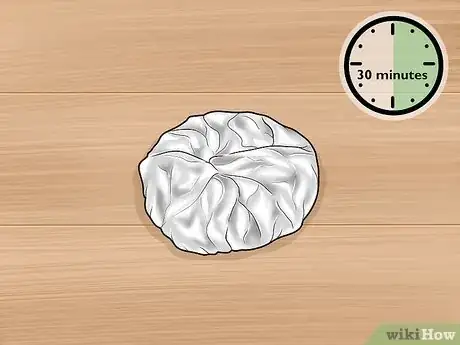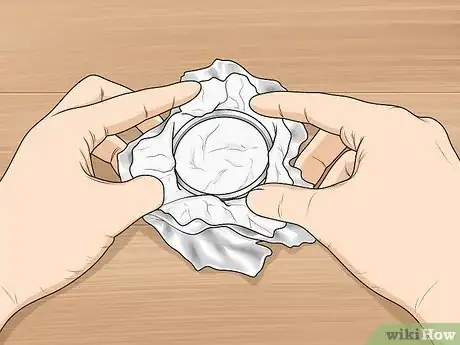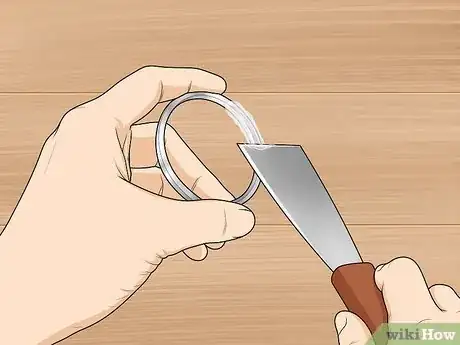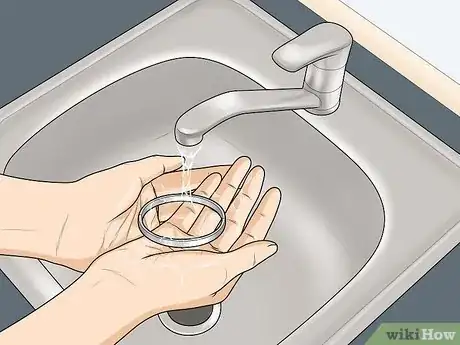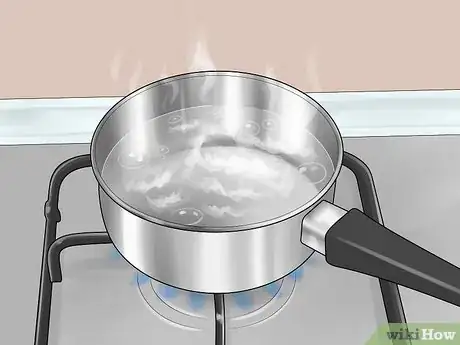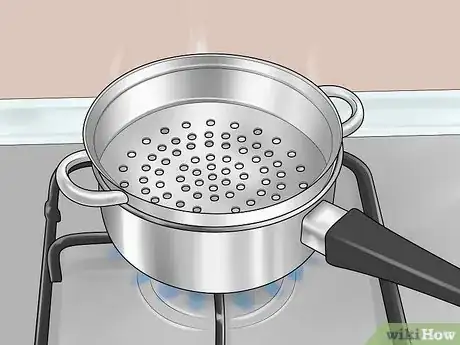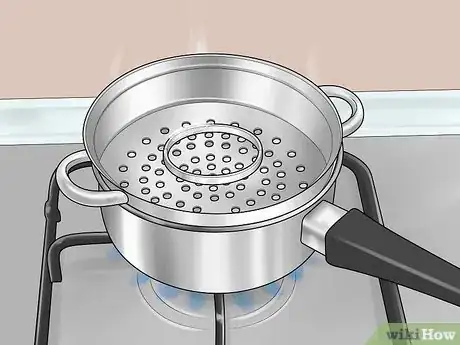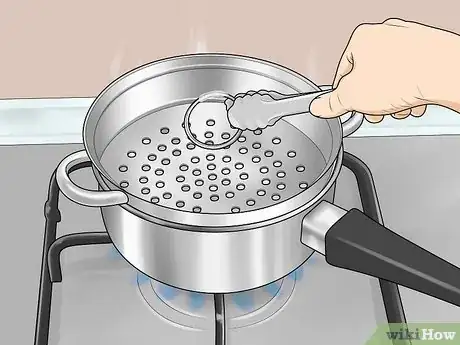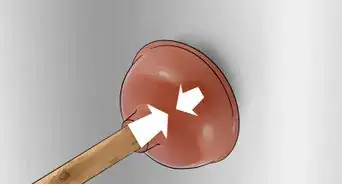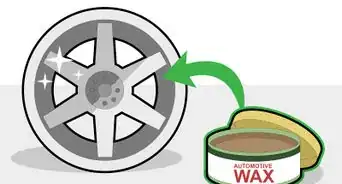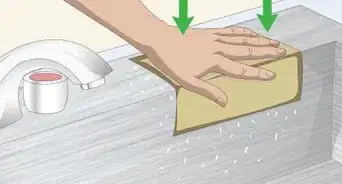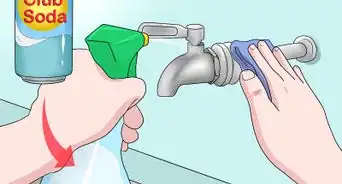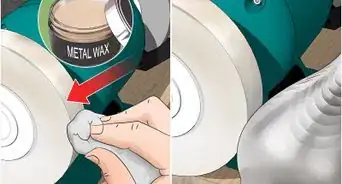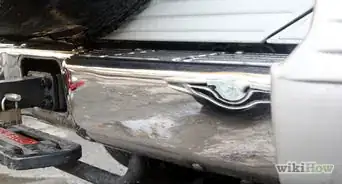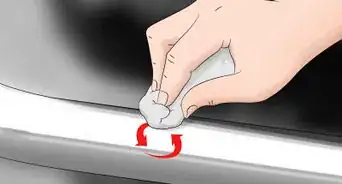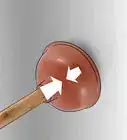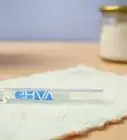This article was co-authored by wikiHow Staff. Our trained team of editors and researchers validate articles for accuracy and comprehensiveness. wikiHow's Content Management Team carefully monitors the work from our editorial staff to ensure that each article is backed by trusted research and meets our high quality standards.
There are 14 references cited in this article, which can be found at the bottom of the page.
This article has been viewed 29,237 times.
Learn more...
Epoxy comes in both resin and glue forms. It is often used to bind 2 surfaces together, or in jewelry making. Sometimes, mistakes happen, but that does not mean that you have to throw your piece away. With a few items from around the house, you may be able to remove most, if not all, of the epoxy and have a fresh start on your project.
Steps
Using Rubbing Alcohol or Acetone
-
1Wrap paper towels around your item. Make sure that you completely cover the item, especially the areas that are epoxied.[1] Another option would be to place your item into a container so that you can soak it instead.
- If you are using a container, you don't need to use paper towels. The container must be deep enough to submerge the item.
-
2Pour rubbing alcohol over the paper towels to soak them. Rubbing alcohol (isopropyl alcohol) comes in different percentages, so use the strongest one that you can find. Alternatively, you can use an acetone-based nail polish remover. Make sure that the paper towels are thoroughly soaked.[2]
- If you placed your item into a container, fill the container with rubbing alcohol or acetone-based nail polish remover.
- If you have a manicure or sensitive skin, wear plastic or vinyl gloves for this step.
- Rubbing alcohol and acetone-based nail polish remover can both release fumes. Work in a well-ventilated area to prevent headaches.
Advertisement -
3Wrap aluminum foil around the paper toweled item. This will prevent the rubbing alcohol or acetone from evaporating as the item "soaks." Make sure that you completely cover the item; you may have to use several layers of aluminum foil for this.[3]
- If you are soaking the item, cover the container with a tight-fitting lid so that the solution doesn't evaporate.
-
4Wait 30 minutes to overnight. During this time, the solution will weaken the bond between the epoxy and the metal. Depending on the type of epoxy that you used, it may even start to soften and dissolve it![4]
- If you used acetone, check your item after 15 to 30 minutes. It is much stronger than rubbing alcohol and will work much faster as a result.
-
5Unwrap the item. Don't be alarmed if the epoxy is still stuck to the item. You will have to scrape it off. It would be a good idea to work in a well-ventilated area for this. If you wore gloves previously, then you should put them back on now.
- If you soaked the item, just open the container and lift the item out.
-
6Scrape or peel the epoxy off. How much effort you end up putting into this depends on how thick the epoxy was layered on. If the epoxy is already peeling, you can just pull it off with your fingers. If it's still stuck to the item, try a paint scraper or chisel instead.[5]
- Work quickly with acetone; if it dries, you won't be able to remove the epoxy.
- If the rubbing alcohol or acetone dries before you finish removing the epoxy, pour more of your solution over the affected area and keep working.
-
7Remove any residue with denatured alcohol or paint thinner, if needed. Sometimes, the epoxy will leave behind a fine film of residue, which is very difficult to remove. If that happens, wipe it down with a rag soaked in denatured alcohol or paint thinner.[6]
- Denatured alcohol is a type of fuel, which you can find in camping supply stores.
- For more stubborn patches of residue, use a steel wool pad instead of a rag.
-
8Rinse the item off with dish soap and warm water, then let it dry. This is especially important if you wiped the item down with denatured alcohol or paint thinner. Get the item wet first, then scrub it with dish soap. Rinse it off with more water, then pat it dry with a towel.
- This is exactly like washing a dish by hand.
Steaming Small Items
-
1Fill a pot with some water and bring it to a boil. You’ll eventually be inserting a steamer basket, so how much water you use depends on the size of the pot and the steamer basket. The water needs to be just below the steamer basket once it's inserted into the pot.[7]
- This works best for epoxy glue and epoxy resin, but it may work for other types of epoxy too.
- If you don’t have a steamer basket, you’ll have to place the entire item into the pot. Use enough water to submerge the item.
- Make sure that the pot you use won't be used again for cooking purposes.
-
2Set a steamer basket into the pot. Again, make sure that water does not touch the bottom of the basket. If it does, pour some of that water out. If the water is more than 1 inch (2.5 cm) below the bottom of the steamer basket, it would be a good idea to add more water so that it doesn't evaporate during steaming.
- If you don't have a steamer basket, skip this step.
-
3Place your metal item into the basket. Make sure that the item won't roll around and that the epoxied area is exposed to the steam. If you need to, set a small, heat-safe dish into the basket first, then set your item into the dish.[8]
- If you don't have a steamer basket, just place the entire item into the pot. Make sure that it's completely submerged.[9]
-
4Cover the pot with a lid and wait 30 minutes. You may have to let the item steam for longer, but start with just 30 minutes for now. Extreme changes in temperature are one of the easiest ways to loosen bonds between 2 materials.[10]
- Make sure that the lid fits tightly; you don't want any of that steam to escape.
- If you didn't use a steamer basket, wait about 5 minutes instead.[11]
-
5Pull the item out with a pair of tongs. Be very careful when opening the pot, as there will be lots of hot steam. Use a pair of kitchen tongs to pull the item out and set it down on a heat-safe surface.[12]
- Move quickly onto the next step before the item cools.
-
6Scrape the epoxy away before the item cools. Use your tongs or a gloved hand to hold the item steady. Next, use some sort of sharp tool to scrape and peel the epoxy away. Scrapers, chisels, or even pliers will all work for this.[13]
- Oven mitts will work just fine for this, but you may be able to maneuver the item better with welding gloves. A pot holder or towel may also work.
- Work quickly; the epoxy will be harder to remove as it cools.[14]
- If the epoxy hardens before you remove it, place the item back into the pot for another 5 minutes or so.
Things You'll Need
Using Rubbing Alcohol or Acetone
- Rubbing alcohol or acetone
- Paper towels
- Aluminum foil
- Scraper, chisel, or flat-head screwdriver
Steaming Small Items
- Pot
- Steamer basket (optional)
- Heat-safe dish (optional)
- Tongs
- Oven mitt
- Scraper, chisel, or flat-head screwdriver
References
- ↑ https://www.youtube.com/watch?v=e2CwjGm1-wo&feature=youtu.be&t=3m
- ↑ https://www.youtube.com/watch?v=e2CwjGm1-wo&feature=youtu.be&t=3m40s
- ↑ https://www.youtube.com/watch?v=e2CwjGm1-wo&feature=youtu.be&t=3m25s
- ↑ https://www.youtube.com/watch?v=e2CwjGm1-wo&feature=youtu.be&t=4m30s
- ↑ https://www.youtube.com/watch?v=e2CwjGm1-wo&feature=youtu.be&t=1m15s
- ↑ https://www.bobvila.com/articles/how-to-remove-epoxy/
- ↑ https://www.youtube.com/watch?v=POjBOr29QEA
- ↑ https://www.youtube.com/watch?v=POjBOr29QEA&feature=youtu.be&t=14s
- ↑ https://www.youtube.com/watch?v=VrtHKfRCBqo&feature=youtu.be&t=1m10s
- ↑ https://www.youtube.com/watch?v=POjBOr29QEA&feature=youtu.be&t=18s
- ↑ https://www.youtube.com/watch?v=VrtHKfRCBqo&feature=youtu.be&t=1m15s
- ↑ https://www.youtube.com/watch?v=POjBOr29QEA&feature=youtu.be&t=27s
- ↑ https://www.youtube.com/watch?v=POjBOr29QEA&feature=youtu.be&t=40s
- ↑ https://www.youtube.com/watch?v=VrtHKfRCBqo&feature=youtu.be&t=2m
- ↑ https://www.bobvila.com/articles/how-to-remove-epoxy/
- ↑ https://www.bobvila.com/articles/how-to-remove-epoxy/
